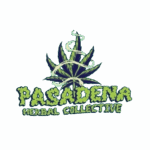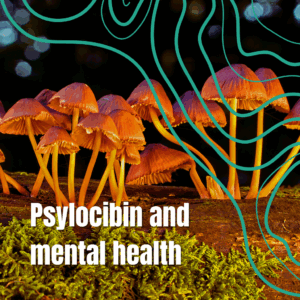

Mushrooms are unique organisms that are neither plants nor animals, yet they play an important role in nature and human life.
They come in many types, from common edible varieties used in cooking to wild species that require careful identification due to potential risks. Understanding what mushrooms are and how they grow helps people appreciate their value in food, medicine, and ecosystem health.

These fungi don’t use sunlight like plants; instead, they absorb nutrients from other materials. Some mushrooms are prized for their taste and nutrition, while others have special properties studied in science. Exploring the diversity of mushrooms reveals surprising facts about their benefits and dangers, making them fascinating to both experts and casual foragers.
Key Takeways
-
- Mushrooms are distinct organisms essential for ecosystems and human use.
-
- Many edible mushrooms offer nutritional benefits but should be identified carefully when foraging.
-
- Scientific study helps understand both the useful and harmful aspects of various mushroom species.
What Are Mushrooms?
Mushrooms are the fruiting bodies of fungi that grow in various environments. They play a key role in nature by breaking down organic material and supporting plant life. Their relationship with the underground mycelium and surrounding plants defines much of their behavior and role in ecosystems.
Fungi And Mycelium
Mushrooms belong to the kingdom Fungi, which includes molds, yeasts, and rusts. The mushroom itself is just the visible part of a much larger organism.
The main body of the fungus is called mycelium. It is a network of thread-like structures called hyphae that spread underground or inside decaying material. Mycelium absorbs nutrients from the environment.
When conditions are right, the mycelium produces the mushroom as a structure to release spores for reproduction. This makes mushrooms important for the spread of fungus species.
Natural Habitats
Mushrooms grow in many habitats, usually where there is moisture and organic material to feed on. Forest floors, meadows, and decaying wood are common places to find them.
They thrive in shaded, damp spots where the mycelium can grow undisturbed. Some species prefer dead plants, while others grow on living trees or soil.
Their growth depends on temperature, humidity, and nutrient availability. This explains why mushrooms often appear after rain or in cool seasons.
Types Of Mushrooms
Mushrooms come in many varieties, each with unique characteristics and effects. Some are good to eat, others can be dangerous, and a few have mind-altering properties. Knowing how to identify these types helps ensure safety and proper use.
Edible Mushrooms
Edible mushrooms are safe to eat and often used in cooking for their flavor and texture. Common types include White Button, Crimini, Portabella, Shiitake, and Oyster. These mushrooms vary in size, taste, and cooking uses.
They grow on different surfaces like soil or decaying wood. Their nutritional value includes vitamins, minerals, and low calories. Many edible species are farmed, making them easy to find in stores.
Some mushrooms, like morels and maitake, are prized for their unique flavor. Proper identification and preparation are important, as confusing edible types with similar-looking toxic mushrooms can be harmful. More about edible varieties can be found at the Mushroom Varieties 101.
Poisonous Mushrooms
Poisonous mushrooms contain toxins that can cause serious illness or death if eaten. They often look similar to edible types, which makes them dangerous for inexperienced foragers.
Common poisonous species include the Death Cap and Destroying Angel. Symptoms from poisoning can range from stomach pain to liver failure. Immediate medical help is crucial when poisoning is suspected.
It’s important to never eat wild mushrooms unless identified by an expert. Some mushrooms contain toxins that may take hours or days to show effects, delaying treatment. Learning to recognize poisonous species reduces risk during mushroom hunting.
Magic Mushrooms
Magic mushrooms contain the chemical psilocybin, which affects the brain and changes perception, mood, and thought. These mushrooms are used for their psychedelic effects and are not safe for casual consumption without supervision.
Psilocybin mushrooms grow naturally in many regions. Common species include Psilocybe cubensis and Psilocybe semilanceata. They are often small and brown, which makes them easy to confuse with other mushrooms.
Use of magic mushrooms is controlled or illegal in many places due to their strong effects and potential risks. Research is ongoing into their use for mental health treatment, but unregulated use can cause anxiety, hallucinations, and other serious effects. More about magic mushrooms is detailed in reports on types of mushrooms.
Popular Edible Mushroom Varieties
Mushroom varieties differ in taste, texture, and cooking uses. Some are mild and versatile, while others have strong, unique flavors. Each type offers specific benefits for culinary dishes, from soups and stir-fries to gourmet recipes.
Nutrition And Health Benefits

Mushrooms offer important nutrients like fiber, iron, and potassium. They have a unique texture that adds value to many dishes. These factors make mushrooms a healthy and versatile food choice.
Key Nutrients
Mushrooms are low in calories but rich in nutrients. They provide protein, which supports muscle health. They also contain antioxidants that help protect cells from damage.
Vitamins like B-complex (including riboflavin and niacin) are found in mushrooms. These support energy production and brain function. Some types also have vitamin D, which helps bone health.
Their nutrient profile makes mushrooms helpful for overall well-being. One cup of cremini mushrooms contains just 15 calories but many vitamins and minerals from this source.
Fiber, Iron, And Potassium
Mushrooms contain dietary fiber, which aids digestion and keeps the gut healthy. Fiber can also help control blood sugar and cholesterol levels.
They are a good plant source of iron, essential for making red blood cells. Iron supports oxygen transport in the body and can prevent fatigue.
Potassium in mushrooms helps regulate blood pressure and maintains fluid balance. It also supports muscle and nerve functions.
These nutrients make mushrooms a smart choice to include in a balanced diet. Their low calorie count combined with fiber, iron, and potassium makes them especially valuable as seen here.
Meaty Texture And Culinary Uses
Mushrooms have a firm, meaty texture that makes them a popular meat substitute in vegetarian and vegan dishes. This texture helps them hold up well in cooking.
Culinary mushrooms come in many varieties like shiitake, portobello, and cremini. Each has unique flavors, from earthy to smoky. This variety adds versatility to meals.
Because mushrooms absorb flavors well, they enhance dishes without adding many calories. They work in soups, stir-fries, pasta, and even grilled dishes. Their texture adds bite and richness without fat.
For cooks, mushrooms are a practical choice that boosts both nutrition and taste according to Harvard.
Risks And Poisoning
Mushrooms can be safe to eat, but some types are poisonous and cause serious health problems. Knowing which mushrooms are dangerous, recognizing early symptoms, and acting quickly can prevent harm.
Research And Modern Discoveries
Today, mycology involves studying fungi at the molecular level. Researchers explore how fungi interact with plants, animals, and humans. Some fungi produce antibiotics or help break down pollutants.
Modern mycologists use tools like DNA sequencing to identify species quickly. Many new mushroom species have been discovered in various states and cities worldwide.
Mycology also contributes to biotechnology, where fungi create enzymes and chemicals used in food production and medicine. Interest in fungi is growing due to their ecological and economic importance, making research in this field very active.
More on the study of fungi and mushrooms can be found at the Britannica mycology page and detailed histories at Lamycosphere.
We hope you find these article useful and interesting if you love all about the fungi world and remember to visit us if you are at Pasadena.


